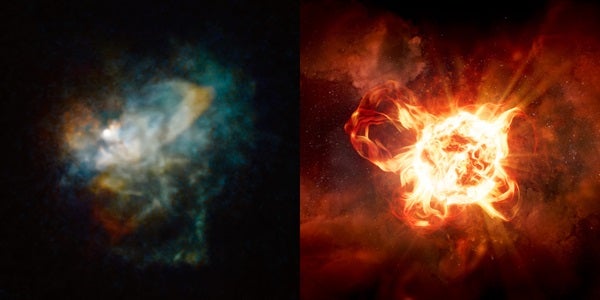The red hypergiant star VY Canis Majoris, 4,000 light-years distant, is in a turbulent phase near the end of its life. Wracked by pulsations, it is expelling mass in a series of dusty knots and arcs. And thanks to the high resolution of the Hubble image above, researchers were able to estimate when several of these outbursts occurred, finding they started popping off more than 1,000 years ago and have persisted until as recently as about 30 years ago.
By comparing these timeframes to historical records of VY Canis Majoris’ brightness, the team found that many of these outbursts correspond to periods when the star’s brightness temporarily faded. The findings, published in the Astronomical Journal in February[JP1] , suggest VY Canis Majoris has a history of events similar to the recent dimming of another giant star: Betelgeuse. In 2019 and 2020, that star in the Orion constellation mysteriously — albeit temporarily — faded. Similar Hubble imaging suggested that Betelgeuse, too, had ejected a cloud of dust that blotted out some of its light.
“VY Canis Majoris is behaving a lot like Betelgeuse on steroids,” said Roberta Humphreys, the study’s lead author and an astrophysicist at the University of Minnesota in Minneapolis. She says these outbursts of material are “probably more common in red supergiants than scientists thought and VY Canis Majoris is an extreme example.”









